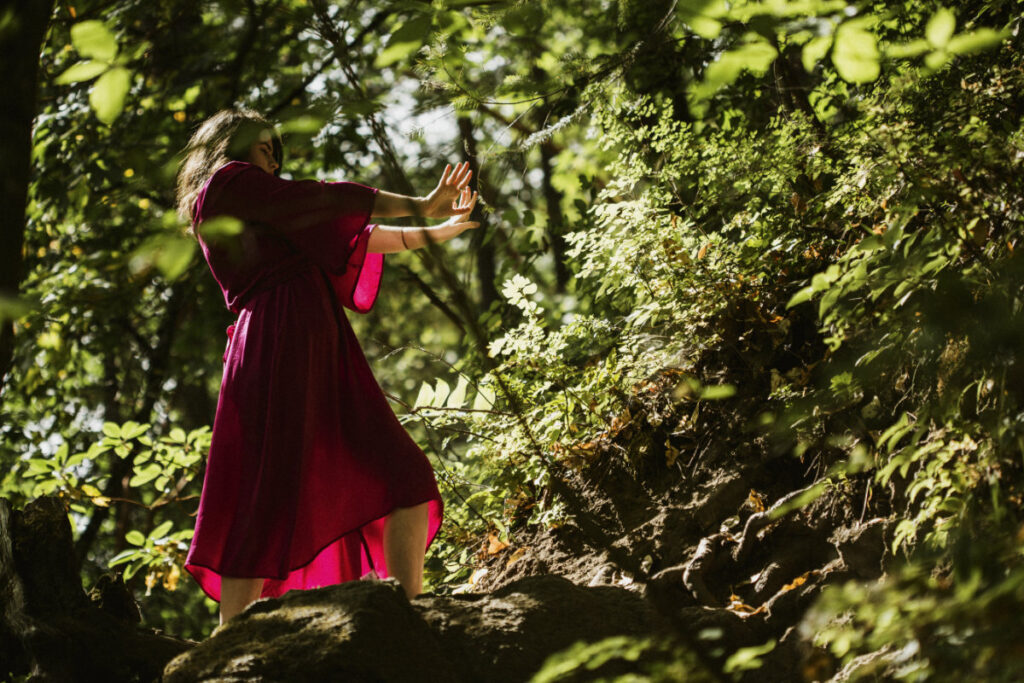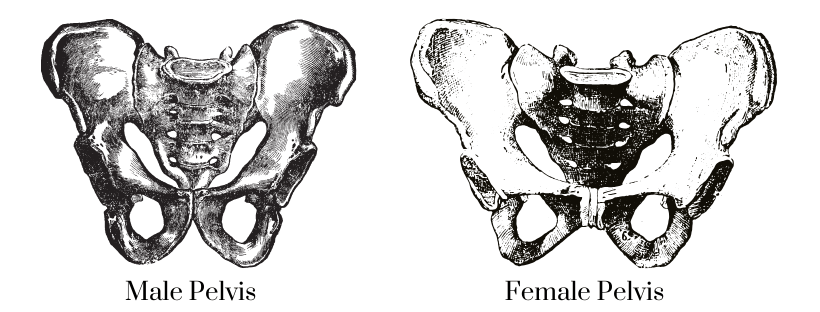The Problem with Spiritual Bypassing

Usha Anandi. 8 | JUNE | 2021
In our Inner Circle Membership this month, we’re diving into what it means to connect to a spiritual practice to unlock a more embodied, fulfilling, and feminine-based way of living. Spirituality reminds us that there is a greater power and that we are more connected to each other than we think.
By unpacking our own personal spiritual journey, we are able to build more presence and compassion for everything and everyone around us. So I invite you to delve into this with us and discern what feels right and what feels forced.
My own spiritual journey has been a complex and beautiful one.
I am no stranger to orthodox practices. In fact, I’ve spent a large part of my spiritual journey in the Himalayas, waking up at 4 am to meditate while swathed in white clothes repeating thousand-year old mantras.
It’s these orthodox practices that guide the teaching I do here at Womben Wellness. The teachings that can bring a womban back to her true power.
I am deeply grateful for the experiences I have had, exploring more traditional, patriarchal practices…. but deep down inside, something never felt right.
Something always felt repressed, some part of me always felt unworthy to be seen, shown, or even recognized. Without realizing it, for a long time I was unconsciously compartmentalizing different aspects of myself, especially the ones that I deemed too human, too wild, too unruly to be shown.
As I deepened into my apprenticeship with my teacher, Doña Maria Carmen of México and started to tap into the instinct, intuition, and power within my womb – it felt like the patriarchal practice of yoga which I had once dedicated myself fully to was no longer working, in fact – it felt suffocating.
And here’s a little secret, coming to terms with this terrified me. And yet, after deepening my understanding of the history of the practice, I learned why.
For my yoga practitioners out there – did you know that the physical practice of asana (posture) was created to bring health and alignment for prepubescent male pelvises? That’s right.
The way we are guided to move our bodies in most Yoga classes is based on cues that have been created for male bodies.
The female pelvis and the male pelvis are anatomically different. The female pelvis is wider in comparison to the taller, less wide male pelvis.
This means that cues like “stand at the front of your mat with feet together” will not only be uncomfortable for most women but may also feel destabilizing. When we don’t feel stable, our body moves out of optimal alignment which in turn affects our breath, blood flow, energetic pathways, and basic movement patterns.
Beyond just the asana, many of the intensive cleansing practices (kriyas) and rigorous sequences of the classical practice of Yoga aren’t always suitable for a person who has a menstrual cycle, is currently bleeding, pregnant, or healing during postpartum.
What we practice is what we become.
We need to return to a more feminine way of moving, breathing, and being, and we need a practice to support us in that.
Please note, you don’t need to identify as female to practice a more feminine-based spirituality. You simply have to desire to return to a more cyclical, fluid, nurturing way of being.
If we want to take part in the revolution, we have to observe, dissect, and dismantle ways of being that exist within the practices that we hold most sacred and dear. Asking ourselves tough questions and constantly seeking is part of the process of moving closer to truth with every breath.
Here are my top three tips for turning ANY practice into a more feminine-based, womb-centered practice.
1. Stop Bypassing
When I first arrived to the practice of Yoga, I felt numb, disconnected, and totally out of my body. After experiencing developmental trauma, I often had a hard time moving my body in the way I desired to, couldn’t actually connect with what was going on within me, and was unaware of how to release patterns of chronic tension that had plagued me for most of my adolescent and adult life.
Instead of focusing on ways to feel my body more, I was instructed to focus on my third eye (located about an inch above the center of your eyebrows, deep inside the brain).
When I went there, I noticed a sense of peace and calm I had never been able to access before. So I practiced this, for years – until I realized that the chronic tension, the trauma, and the numbness in my body was actually still there.
What’s more, my intuition began to expand in a way that I didn’t understand – leaving me totally overwhelmed and at times feeling unsafe in this new and uncharted cosmic universe I was now traveling.
It wasn’t until I found my teacher, Doña Maria Carmen and began to study Feldenkrais Somatic Education that I actually started to come back into my body. Not by bypassing it – but by actually creating time to live in it.
Bypassing teaches us to hide from our humanness. Feminine-based spirituality teaches us how to celebrate it.
The pain, suffering, joy, and triumphs you have experienced are all worthy to be seen, accepted, and honored.
So when you feel an emotion arise that seems uncomfortable for you, try and notice it instead of immediately rationalizing it and going to a place that feels more ‘spiritual’, aka just bypassing what you’re feeling.
The only way out is through.
If this is something that you would like to cultivate, we will be offering tools in our Inner Circle this month to cut through spiritual bypassing and I hope you’ll join us.
2. Unsubscribe from Spiritual Hierarchy
The teacher-student relationship is central to many different spiritual paths. In these traditions, the student is nurtured on their spiritual journey by an experienced teacher who has both faced and overcome common challenges one may face while walking the path.
This relationship is both sacred and essential to not only spiritual practices, but our health within society as a whole.
But this is not the hierarchy I’m talking about.
The spiritual hierarchy that we need to watch out for is the hierarchy that places a person, Guru, Master, or whatever you call them on a pedestal.
In this type of hierarchy, the teacher is thought to know all and because of that, is often exempt from normal scrutiny that other people would be subject to due to their ‘enlightened’ status. If the teacher is questioned, the disciple is commonly privately or publicly shamed and invited to ‘go inside’ to figure it out, as if their healthy discretion is a sign of egoism.
This kind of voluntary submission and sacrifice of autonomy is both detrimental to the spiritual process and often, dangerous.
We only need to look to the recent examples of the Mooji Baba scandal, Bikram, the crimes within the Catholic Church, and the Agama Yoga ousting to see why spiritual hierarchy is so problematic.
Spiritual teachers are human. To put them on a pedestal is setting ourselves up for great disappointment.
A true teacher, Guru, Master, Priest and/or guide is an embodiment of equality and never uses their spiritual status as a means to gain control, overpower, or manipulate their subjects – in any way.
Remember – the true Guru exists within.
Any teacher you find on your path is here to remind you of that.
3. Stop Searching for Perfection Disguised as Enlightenment
I believe that it’s our true human nature that desires to understand, heal, transform, and expand to our greatest potential.
Yet, we have to be extra careful while walking a spiritual path to the ways in which, in search for this expansion, we deny ourselves the right to be human.
In our quest for perfection, we miss the point entirely.
Perhaps the true fulfillment doesn’t come once we escape the grip of humanness but arises when we’re able to accept ourselves entirely in it.
So, when you arrive to your spiritual practice, ask yourself why you’re doing it.
Is it to run away from something?
Is it in pursuit of a goal that you believe you need to reach before you’re able to be fully present, blissful, and alive?
Salvation is not after, it’s right now. It’s right here.
Next time you find yourself in a very human situation, making the same mistake you always do – use this saying, which I’ve been utilizing a lot in my own (very human) life lately –
“Oh my, how human of me!”
We all know the deep sigh of relief that arises when we’re around someone who grants themself permission to just be themselves, and in turn – does the same for others.
The intention of feminine-based spirituality is to cultivate a sense of humor, a lightheartedness, and an ability to actually celebrate the present moment and the gift of this existence.
If we’re doing anything but that, I believe we’re missing the point.
Remember, feminine-based spirituality isn’t just for those who identify as women.
Feminine-based spirituality is for all those who desire to find liberation in the here and now by using body-based, somatic techniques to return to a sense of wholeness and centeredness.
Feminine-based spirituality is for all those that desire to strengthen their connection to their bodies, their ancestors, and the Earth. It’s about returning to a more natural, cyclical way of doing things – emulating nature and her rhythms.
If you’re ready to learn, heal and transform your life in a more feminine based way while being lovingly supported by a global community then our Inner Circle is the place for you.
This online membership is a virtual sisterhood that keeps you aligned with your path and accountable for your own transformation with live gatherings every month.
Are you ready to join the circle?



